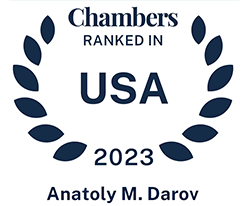In April 2017, the American Institute of Architect (AIA) issued its once in a decade update to its core A201 design-bid-build family of contract documents. Because the AIA documents are viewed by many to be the standard for the construction industry, changes to these core documents are noteworthy and will impact construction contracting, project administration, and dispute resolution in the years to come. The 2017 updates include revisions to each of the standard forms of agreement between Owner and Contractor, agreements between Owner and Architect, the A201 General Conditions, and the E204 Sustainable project exhibit, among others.
Last revised in 2007, the design-bid-build documents reflect recent developments in case law, industry trends, and technological advances, as well as numerous clarifications and language refinement over the 2007 text. Discussed below, in no particular order, are a number of the most important changes to the A201 General Conditions, which document serves as the backbone of the AIA design-bid-build document family.
Electronic Communications. The A201-2017 General Conditions adopt the notion of electronic communications for the purpose of giving notice under the contract. Notice by electronic means is now permissibly provided that a method of electronic communication is set forth in the agreement (Section 8.6 in the case of the A101-2017 Owner Contractor Agreement). Accordingly, and sensibly, written notice by Snapchat (or any other social media platform) will only be allowed if agreed to by the parties in the contract. Notably, Article 15 claims which still require written notice by traditional methods with proof of delivery.
New Insurance and Bonds Exhibit. AIA has introduced a new insurance and bonds exhibit to the A201 General Conditions and removed the majority of the insurance requirements form the insurance article in the body of the A201-2017 General conditions. While this change makes it easier for users of this document to develop custom templates and modify insurance requirements on a project by project basis, it is critical that the insurance exhibit is not overlooked. The insurance coverage requirements, cover limits, additional insured requirements, and relevant conditions are all now contained in the exhibit to the General Conditions.
Owner’s Financial Arrangements. The A201-2017 General Conditions expand the Contractor’s ability to require evidence of the Owner’s financial arrangements for the project and make more explicit the Owner’s obligation to delivery such evidence prior to commencement of the work as well as during the course of the project.
Payments and Lien Claims. The A201-2017 General Conditions now include standard language requiring the Contractor to indemnify and defend the Owner for lien claims and other claims for payment by subcontractors and suppliers. While this is a welcome change for Owners, the standard language included in the General Conditions could be fraught with issues in its practical application and, therefore, should be reviewed and modified to clearly establish the obligations of the parties considering that many payment claims by subs and suppliers involve pass-throughs to the Owner. Also new in the 2017 document, is an expansion of the Owner’s right to communicate director with suppliers as well as subs with regard to the status of payments on the project.
Liquidated Damages. AIA has added language in Section 15.1.1 of the A201-2017 General Conditions to clarify that an Owner does not need to prosecute an Article 15 claim in order to assess liquidated damages against the Contractor provided that such liquidated damages are otherwise permitted by the contract. This change addresses split authority around the country on this point and will serve to clarify the intent of the documents which was not to treat enforcement of liquidated damages provisions as contract claims under Article 15.
I will try to cover changes to other documents updated by the AIA in future posts to this blog. The 2017 updates are a worthwhile study for anyone engaged in the construction industry who relies on the AIA contract documents. In addition to the
updates released in April 2017, AIA will be issuing additional updates this fall that will include revisions to its various scope documents that support the design-bid-build family of documents. Those documents include modified versions of the standard form of architects services for design and construction administration, site evaluation and project feasibility, historic preservation, on-site project representation, and facility support. The fall 2017 release will also include a revised standard form for commissioning services, change orders, certificate of substantial completion, ASIs, and other commonly used administration documents.
The AIA has made excellent resources available on its website (www.aia.org) to further orientate users of the AIA documents on the 2017 changes. The American Bar Association Forum on the Construction Industry has also published an excellent guide to the A201-2017 General Conditions that reviews and analyzes all of the significant edits to this core document. The ABA 2017 A201 Deskbook can be found here.



